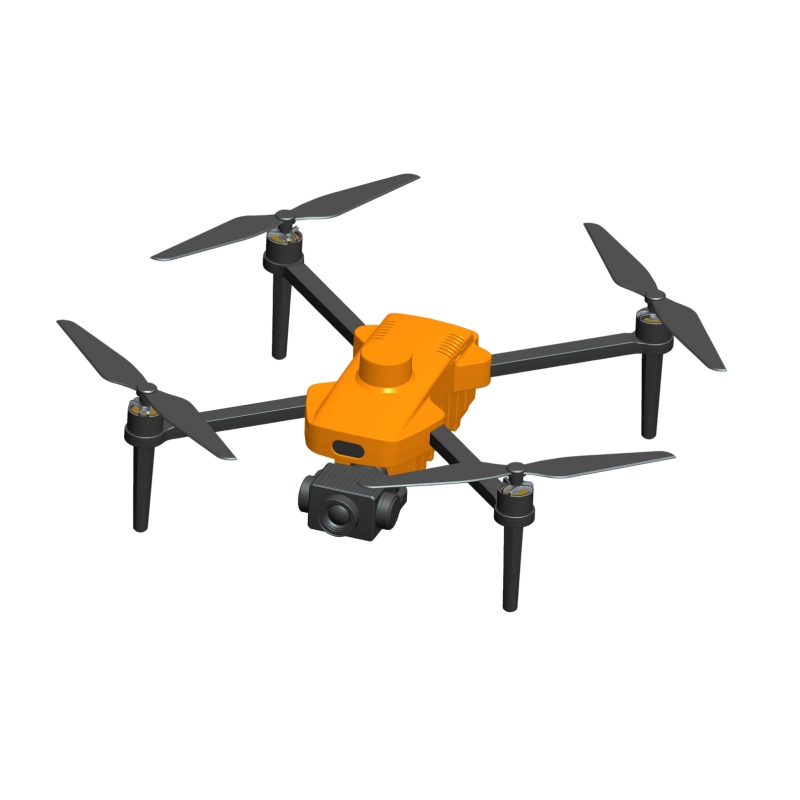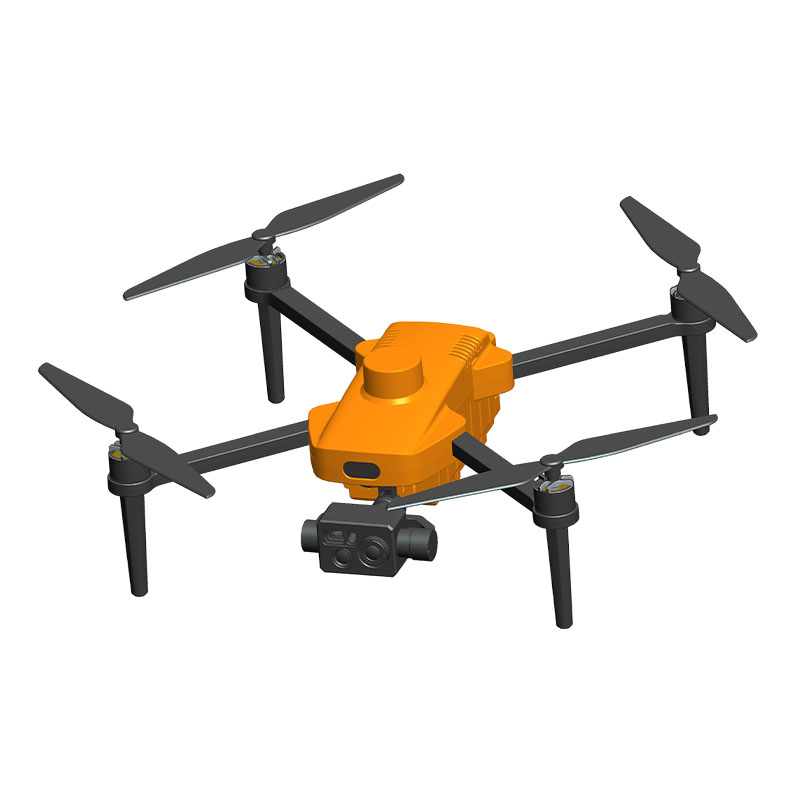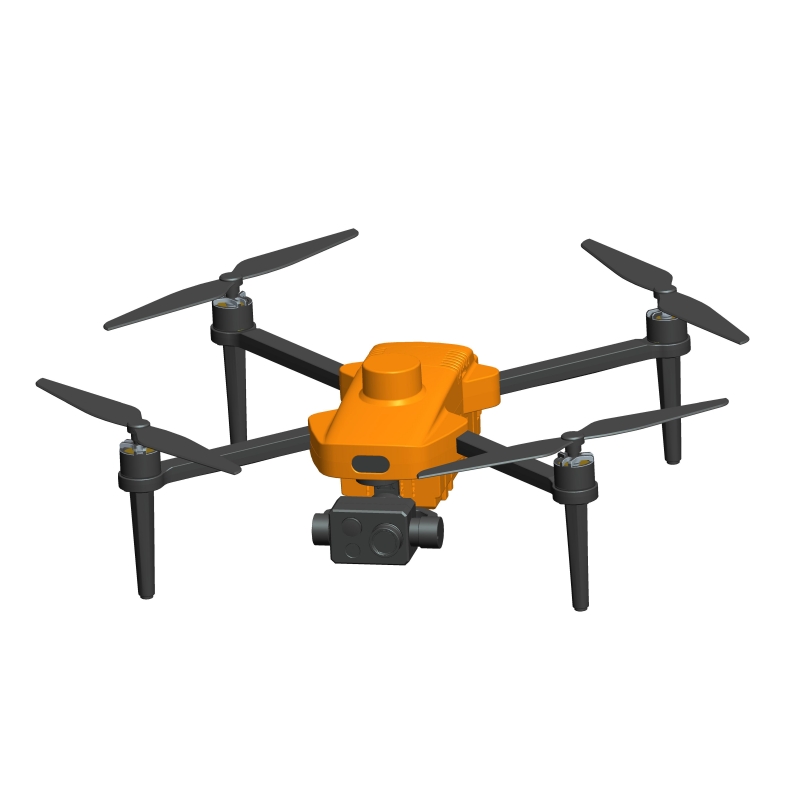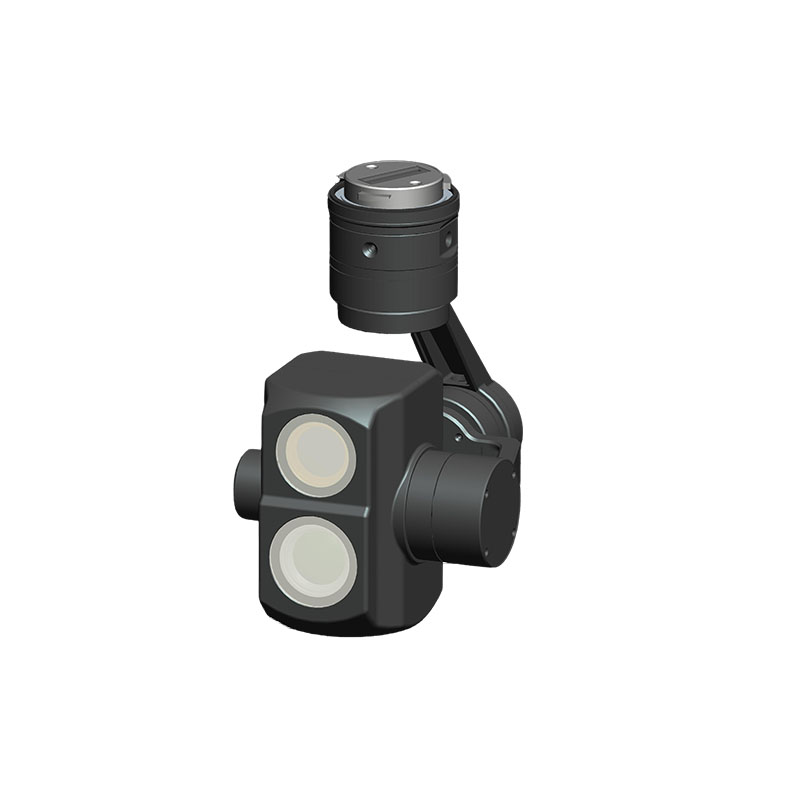How does non-contact microwave Doppler technology ensure stable flow measurement using hydrological flow radar in inclement weather such as heavy rain, dense fog, or at night?
Release Time : 2025-08-05
Amid the pulses of rivers, lakes, and oceans, hydrological flow radar, with its silent and profound technological eye, observes every surge and shift of water. It is more than a simple replacement for traditional flow measurement methods; instead, it is a sophisticated sensing system that integrates electromagnetic wave technology, fluid dynamics, and intelligent algorithms. It has become an indispensable "digital sentinel" for modern water resource management, flood prevention and early warning, and ecological and environmental monitoring. From surging river mouths to tranquil irrigation canals, from urban drainage networks to vast wetland reserves, hydrological flow radar's non-contact, high-precision, and all-weather monitoring capabilities redefines the boundaries of human understanding of water movement, transforming invisible flow into quantifiable, predictable, and decision-making intelligent data.
The superiority of hydrological flow radar stems primarily from its complete transcendence of natural interference. Traditional flow measurement methods, such as buoys, current meters, and ultrasonic Doppler flowmeters, often require contact with the water. These methods are not only affected by floating debris, aquatic plants, and silt accumulation, but also pose challenges in extreme conditions such as flooding, ice and frost, or low visibility at night, potentially damaging the equipment. Hydrological flow radar, on the other hand, utilizes the non-contact microwave Doppler principle. Installed on bridge piers, banks, or specialized supports, it transmits electromagnetic waves at an oblique or vertical angle toward the water surface. Its signals penetrate rain, fog, and darkness, reliably capturing minute surface ripple displacements even in torrential rain, dense fog, or at night, accurately inverting surface flow velocity. This "remote flow measurement" capability not only ensures the safety of personnel and equipment but also enables truly continuous, real-time, and uninterrupted monitoring, advancing hydrological observation from "snapshot" to "high-definition live broadcast."
Its core value lies in its deep integration of data accuracy and system intelligence. Advanced hydrological flow radars not only measure surface flow velocity but also use built-in AI algorithms and hydraulic models, combined with on-site cross-sectional parameters, to infer average flow velocity and instantaneous flow rate. Some high-end models integrate high-definition video surveillance and water level radar, enabling simultaneous monitoring of flow velocity, water level, and flow rate. Automatic data calibration and outlier identification and elimination ensure reliable results. With measurement accuracy reaching ±1% and resolution down to 0.01 m/s, they maintain stable output even at low flow rates (e.g., 0.05 m/s) or under complex turbulent conditions. This high-fidelity data is transmitted in real time to a cloud platform via 4G/5G, LoRa, or satellite communications. Administrators can visualize water conditions anytime, anywhere, providing accurate decision-making for reservoir operations, flood forecasting, and ecological water replenishment.
Hydrological flow radars provide a sense of control. The device features an integrated design with an IP68-rated enclosure, making it corrosion-resistant and UV-resistant, suitable for long-term outdoor exposure. Installation and commissioning are simple, and parameter settings can be completed wirelessly and remotely, significantly reducing the complexity and cost of on-site operations. The self-diagnostic function monitors device status in real time, providing clear information on battery level, signal strength, and data quality, and promptly issues fault warnings. For hydrological stations, environmental protection departments, and water conservancy project managers, this means fewer inspections, lower maintenance costs, and higher system availability. During emergency response, portable hydrological flow radars can be quickly deployed in critical areas, buying valuable time for emergency decision-making.
The deeper significance lies in their role as a strategic cornerstone for smart water conservancy and ecological civilization. Amidst intensifying global climate change and the frequent occurrence of extreme hydrological events, accurate flow monitoring is the lifeline of disaster prevention and mitigation. The dense monitoring network constructed by hydrological flow radars is like implanting countless sensory nerves in the earth, providing early warning of flash floods, waterlogging, and dam breach risks. In water resource management, they facilitate refined water metering and allocation, ensuring water supply security and agricultural irrigation efficiency. In ecological protection, continuous flow data provides scientific support for river health assessments, wetland ecological water demand analysis, and fish migration pathway research.
Although a combination of metal and electronics, the hydraulic flow radar carries a profound understanding of hydrological patterns and the dynamics of the Earth. It uses invisible electromagnetic waves to penetrate wind and rain, employs sophisticated algorithms to decipher the secrets of water flow, and uses reliable communications to bridge the cognitive gap between humans and nature. In an era of data-driven, intelligent decision-making, and sustainable development, it is steadily and irreplaceably becoming the most sensitive "perceptive eye" in modern hydrological monitoring systems, ensuring that every movement of water becomes a precise safeguard for life and safety.
The superiority of hydrological flow radar stems primarily from its complete transcendence of natural interference. Traditional flow measurement methods, such as buoys, current meters, and ultrasonic Doppler flowmeters, often require contact with the water. These methods are not only affected by floating debris, aquatic plants, and silt accumulation, but also pose challenges in extreme conditions such as flooding, ice and frost, or low visibility at night, potentially damaging the equipment. Hydrological flow radar, on the other hand, utilizes the non-contact microwave Doppler principle. Installed on bridge piers, banks, or specialized supports, it transmits electromagnetic waves at an oblique or vertical angle toward the water surface. Its signals penetrate rain, fog, and darkness, reliably capturing minute surface ripple displacements even in torrential rain, dense fog, or at night, accurately inverting surface flow velocity. This "remote flow measurement" capability not only ensures the safety of personnel and equipment but also enables truly continuous, real-time, and uninterrupted monitoring, advancing hydrological observation from "snapshot" to "high-definition live broadcast."
Its core value lies in its deep integration of data accuracy and system intelligence. Advanced hydrological flow radars not only measure surface flow velocity but also use built-in AI algorithms and hydraulic models, combined with on-site cross-sectional parameters, to infer average flow velocity and instantaneous flow rate. Some high-end models integrate high-definition video surveillance and water level radar, enabling simultaneous monitoring of flow velocity, water level, and flow rate. Automatic data calibration and outlier identification and elimination ensure reliable results. With measurement accuracy reaching ±1% and resolution down to 0.01 m/s, they maintain stable output even at low flow rates (e.g., 0.05 m/s) or under complex turbulent conditions. This high-fidelity data is transmitted in real time to a cloud platform via 4G/5G, LoRa, or satellite communications. Administrators can visualize water conditions anytime, anywhere, providing accurate decision-making for reservoir operations, flood forecasting, and ecological water replenishment.
Hydrological flow radars provide a sense of control. The device features an integrated design with an IP68-rated enclosure, making it corrosion-resistant and UV-resistant, suitable for long-term outdoor exposure. Installation and commissioning are simple, and parameter settings can be completed wirelessly and remotely, significantly reducing the complexity and cost of on-site operations. The self-diagnostic function monitors device status in real time, providing clear information on battery level, signal strength, and data quality, and promptly issues fault warnings. For hydrological stations, environmental protection departments, and water conservancy project managers, this means fewer inspections, lower maintenance costs, and higher system availability. During emergency response, portable hydrological flow radars can be quickly deployed in critical areas, buying valuable time for emergency decision-making.
The deeper significance lies in their role as a strategic cornerstone for smart water conservancy and ecological civilization. Amidst intensifying global climate change and the frequent occurrence of extreme hydrological events, accurate flow monitoring is the lifeline of disaster prevention and mitigation. The dense monitoring network constructed by hydrological flow radars is like implanting countless sensory nerves in the earth, providing early warning of flash floods, waterlogging, and dam breach risks. In water resource management, they facilitate refined water metering and allocation, ensuring water supply security and agricultural irrigation efficiency. In ecological protection, continuous flow data provides scientific support for river health assessments, wetland ecological water demand analysis, and fish migration pathway research.
Although a combination of metal and electronics, the hydraulic flow radar carries a profound understanding of hydrological patterns and the dynamics of the Earth. It uses invisible electromagnetic waves to penetrate wind and rain, employs sophisticated algorithms to decipher the secrets of water flow, and uses reliable communications to bridge the cognitive gap between humans and nature. In an era of data-driven, intelligent decision-making, and sustainable development, it is steadily and irreplaceably becoming the most sensitive "perceptive eye" in modern hydrological monitoring systems, ensuring that every movement of water becomes a precise safeguard for life and safety.







